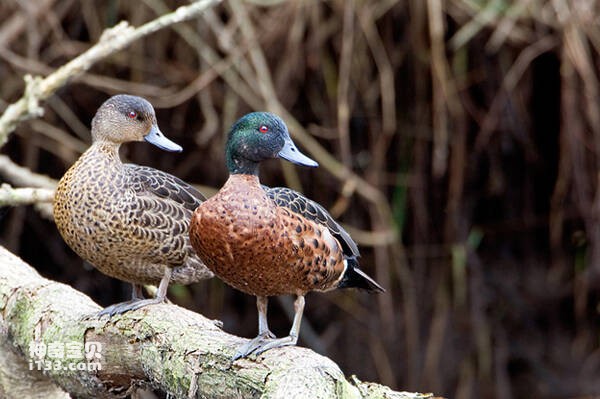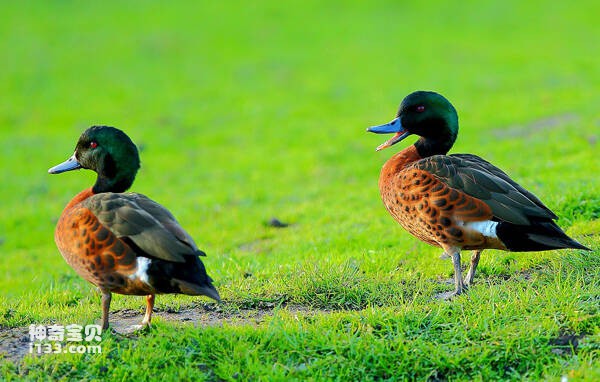Anas castanea
IUCN
LCBasic Information
Scientific classification
- name:Anas castanea
- Scientific Name:Anas castanea,Chestnut-breasted Teal
- Outline:Waterfowl
- Family:
Vital signs
- length:38-46cm
- Weight:505-766g
- lifetime:No textual research information is available
Feature
It is one of the most common ducks in Australia
Distribution and Habitat
It is found in south-western and south-eastern Australia, Tasmania and its nearby islands.
Living in estuarine wetlands and near coasts, it is one of several species of duck that successfully withstand high salinity waters. It is found in freshwater lakes, reservoirs and artificially treated wastewater ponds. In coastal areas, its nests are built in large tree holes or in short grass grasslands.
Appearance
Measuring 38-46 cm long and weighing 505-766 grams, the chestnut-breasted duck is one of the most common ducks in Australia. Male and female birds have different feather colors, the male duck is more bright, chestnut-red in the chest and abdomen, while the female duck is dark, belonging to the typical female duck feather color. The teal has a high forehead, and the male feathers of the breeding stage are particularly colorful, especially the head and neck have a dark green reflecting luster. Below the chest and on the wings it is a mottled dark brown. The tail is black, in stark contrast to the white on both sides of the abdomen. The wings are mostly brown with slight white bands. The adult female has dark brown plumage. Feather center dark margin light yellow. The throat and foreneck are pale yellow, and the wings are the same as those of the male duck. Young ducks are similar, but the central black plumage is less pronounced.
The irises are bright red, and the beak and legs are bl
Details
Chestnut-breasted duck (Anas castanea ) Chestnut breasted Teal, no subspecies.

Chestnuts usually live in groups with other grey ducks, usually in small groups. In the fall and early winter, spawning season chestnut-breasted ducks can be seen living apart from small flocks in pairs. They're good divers, and along the coast they hunt for prey at the edge of the high tide. In inland lakes, they dive to catch their prey. Get food underwater. It feeds mainly on plants and seeds, and sometimes on animal foods such as Marine mollusks and crustaceans. Ducks have webbed toes, good at swimming and splashing in the water, swimming tail out of the water, good at foraging in the water, splashing and mating. Splashing in water is beneficial to the cleanliness and growth of feathers.

The breeding season for chestnut-breasted ducks generally begins in August. In monogamy, both partners jointly choose the spawning ground and territorial boundaries, and the female ducks incubate the eggs. The nest is usually placed in a hollow tree in the forest, six to eight feet above the water. However, sometimes chestnut-breasted ducks also build their nests on nearby ground with water, and build their nests slightly higher. The spawning season is long, usually from August to November (but sometimes from June to December). Building two or three litters, the female ducks lay 7-13 cream-colored eggs. Incubation lasts 26-28 days. Male ducks do not participate in hatching and do not take care of the chicks in their early days. Sometimes, some female ducks lay their eggs in another female's nest, so that their nests also contain eggs from other females, and some nests contain as many as 17 eggs. Soon after birth, the duckling can swim. After a day or two, they can swim with their mother for food. Both parents will protect them, and when threatened by hunters and predators, the adult ducks will feign injury to distract the attackers and allow the ducklings to escape.
Listed on the International Union for Conservation of Nature (IUCN) 2013 Red List of Threatened Species ver 3.1 - Low Risk (LC).
Protect wild animals and eliminate wild meat.
Maintaining ecological balance is everyone's responsibility!








